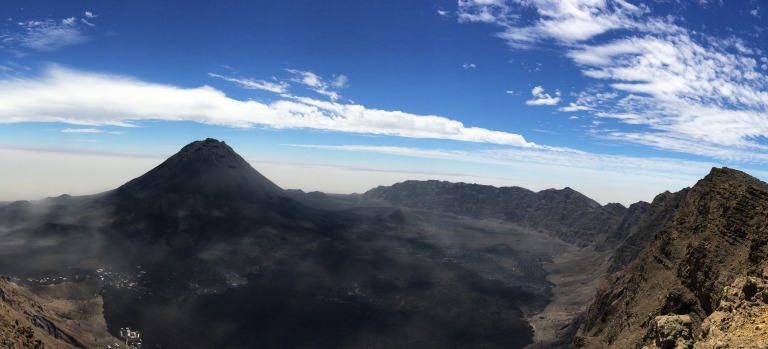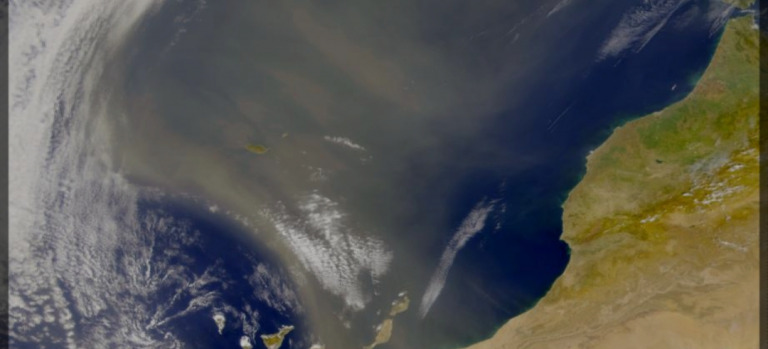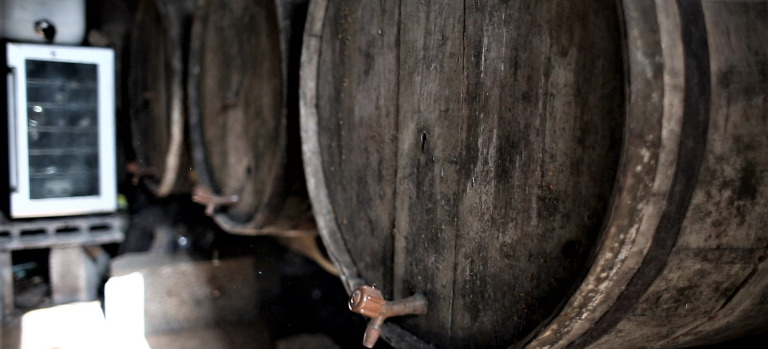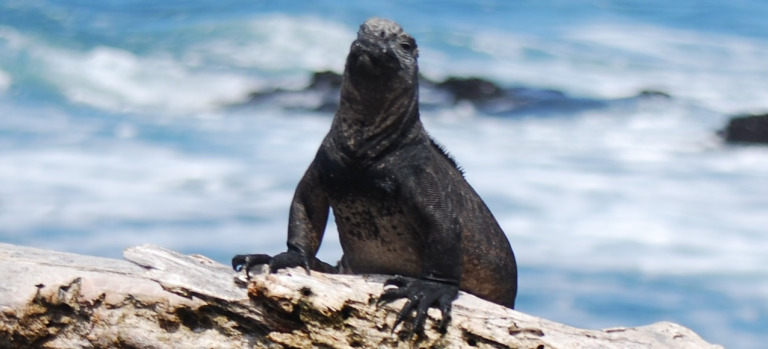Atmosphere, Aerosols and Climate
The Group of Atmosphere, Aerosols and Climate focuses its research on the composition of the atmosphere, especially aerosols or atmospheric particles, due to the influence they have on air quality, biogeochemical processes and climate.
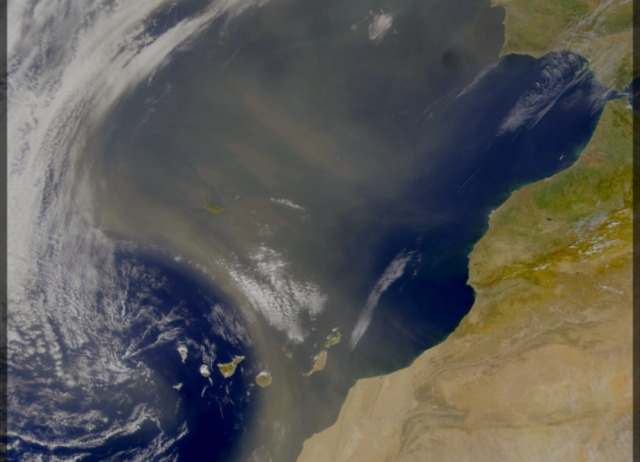
Presentation
Some of our research lines are:
- Variability in desert dust and meteorological processes.
- Identification of air pollution sources.
- Transboundary air pollution.
- Transport of biorelevant trace elements in atmospheric aerosols.
- Impact of desert dust on the heart disease.
- Ultrafine particles and black carbon in urban environments.
- Chemical composition and physical properties of aerosols.
Research lines
PhD & MSc. Thesis
Optimización de un método de extracción para la determinación de iones en aerosoles atmosféricos
Estudio para la acreditación del servicio de electrónica del SEGAI (ULL) para la calibración de temperatura por la norma UNE-EN ISO/IEC 17025:2017
Determinación de la fracción soluble de metales en aerosoles con impacto en los ecosistemas marinos
Estudio de los aportes atmosféricos de nutrientes al medio oceánico durante calimas de polvo sahariano en Canarias
Funding
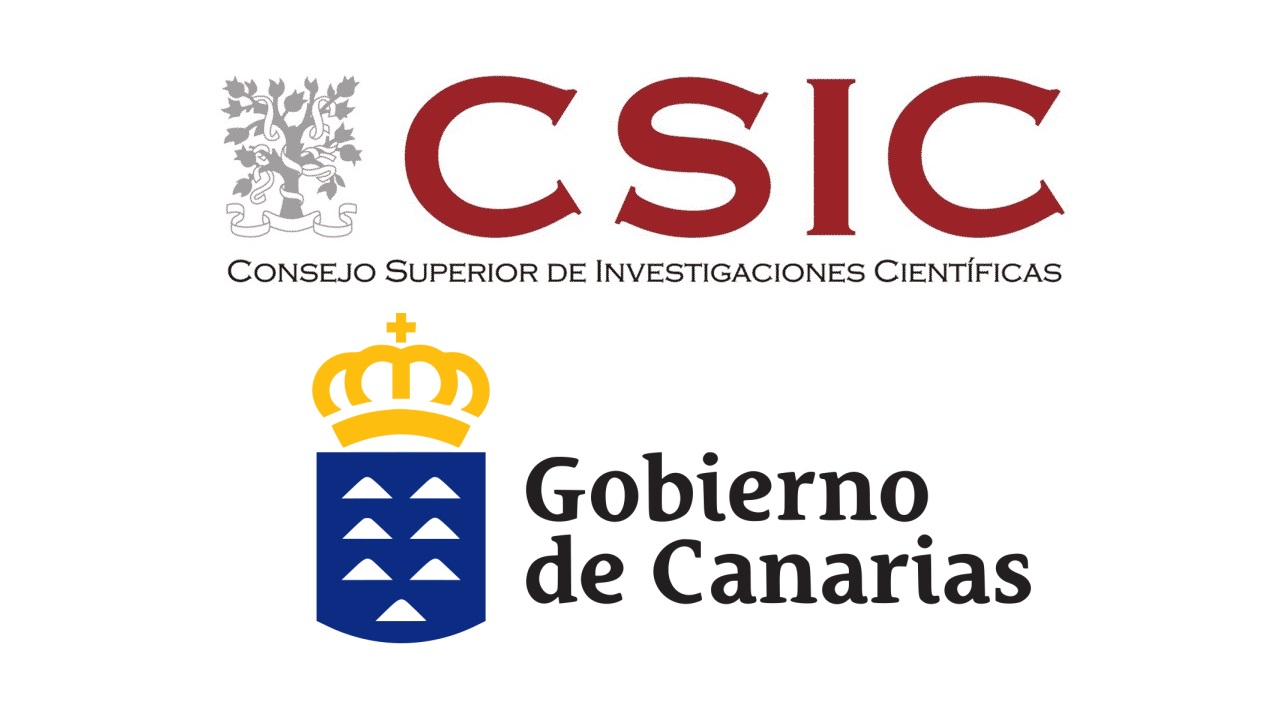
Laboratorio de Calidad del Aire de Canarias
En Ejecución
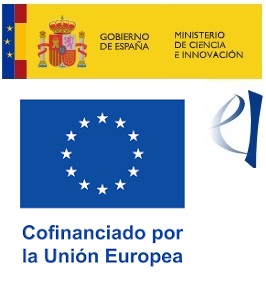
Estudio de eventos extremos de aerosoles de origen desértico y volcánico en el Atlántico Norte tropical y subtropical (AeroExtreme)
En Ejecución

Impacto de la desgasificación del volcán de Cumbre Vieja – Hoya de Tajogayte en la formación de nuevas partículas y composición de los aerosoles atmosféricos
En Ejecución
People
Sergio Rodríguez González
Diana Mesa
Jessica López
Publications
Impact of the 2021 La Palma volcanic eruption on air quality: Insights froma multidisciplinary approach
The La Palma 2021 volcanic eruption was the first subaerial eruption in a 50-year period in the Canary Islands (Spain), emitting ~1.8 Tg of sulphur dioxide (SO2) into the troposphere over nearly 3 months (19 September-13 December 2021), exceeding the total anthropogenic SO2 emitted from the 27 European Union countries in 2019. We conducted a comprehensive evaluation of the impact of the 2021 volcanic eruption on air quality (SO2, PM10 and PM2.5 concentrations) utilising a multidisciplinary approach, combining ground and satellite-based measurements with height-resolved aerosol and meteorological information. High concentrations of SO2, PM10 and PM2.5 were observed in La Palma (hourly mean SO2 up to ~2600 μg m−3 and also sporadically at ~140 km distance on the island of Tenerife (> 7700 μg m−3) in the free troposphere. PM10 and PM2.5 daily mean concentrations in La Palma peaked at ~380 and 60 μg m−3. Volcanic aerosols and desert dust both impacted the lower troposphere in a similar height range (~ 0–6 km) during the eruption, providing a unique opportunity to study the combined effect of both natural phenomena. The impact of the 2021 volcanic eruption on SO2 and PM concentrations was strongly influenced by the magnitude of the volcanic emissions, the injection height, the vertical stratification of the atmosphere and its seasonal dynamics. Mean daily SO2 concentrations increased during the eruption, from 38 μg m−3 (Phase I) to 92 μg m−3 (Phase II), showing an opposite temporal trend to mean daily SO2 emissions, which decreased from 34 kt (Phase I) to 7 kt (Phase II). The results of this study are relevant for emergency preparedness in all international areas at risk of volcanic eruptions; a multidisciplinary approach is key to understand the processes by which volcanic eruptions affect air quality and to mitigate and minimise impacts on the population.
Milford, Celia; Torres, Carlos F.; Vilches, Jon; Gossman, Ann-Kathrin; Weis, Frederik; Suárez-Molina, David; García, Omaira E.; Prats, Natalia; Barreto, África; García, Rosa D.; Bustos, Juan J.; Marrero, Carlos L.; Ramos, Ramón; Chinea, Nayra; Boulesteix, Thomas ; Taquet, Noémie; Rodríguez, Sergio; López-Darias, Jessica; Sicard, Michaël; Córdoba-Jabonero, Carmen; Cuevas, Emilio.
Rationale and Design of the Impact of Air Pollution Due to DESERT Dust in Patients with HEART Failure (DESERT HEART)
[Aims]: The main objective of this study is to determine whether exposure to Saharan dust causes airway inflammation and oxidative stress in patients with stable chronic heart failure (HF) and a left ventricular ejection fraction of less than 40%. [Methods]: A longitudinal study design is used, involving the inclusion of 40 patients with stable chronic HF and a left ventricular ejection fraction of less than 40%. Four sputum samplings will be taken from each patient, with one sampling taken each week over four consecutive weeks. The sputum samples will be used to analyze the degree of inflammation and oxidative stress. Air quality monitoring stations will be used to analyze the particulate matter (PM) exposure of each patient. The intrusion of desert dust will be identified using meteorological models. There will be 160 scheduled samplings in 40 patients with chronic HF. Mixed regression models will be used to assess the influence of the concentrations of PM (from the episodes of desert dust) upon the airway inflammation and oxidative stress markers. [Conclusion]: The results of this study will test the hypothesis that exposure to high concentrations of Saharan dust affects the normal function of the respiratory epithelium due to the imbalance between the production of free radicals and antioxidant enzymes, thus causing increased pulmonary inflammation and oxidative stress in patients with HF that in turn may facilitate decompensations of their background disease condition.
Domínguez-Rodríguez, Alberto; Avanzas, Pablo; Báez-Ferrer, Néstor; Abreu-González, Pedro; Rodríguez, Sergio; Matos-Castro, Sebastian; Hernández-Vaquero, Daniel.
Observing mineral dust in Northern Africa, the Middle East and Europe: current capabilities and challenges ahead for the development of dust services
Mineral dust produced by wind erosion of arid and semi-arid surfaces is a major component of atmospheric aerosol that affects climate, weather, ecosystems, and socio-economic sectors such as human health, transportation, solar energy, and air quality. Understanding these effects and ultimately improving the resilience of affected countries requires a reliable, dense, and diverse set of dust observations, fundamental for the development and the provision of skillful dust forecasts tailored products. The last decade has seen a notable improvement of dust observational capabilities in terms of considered parameters, geographical coverage, and delivery times, as well as of tailored products of interest to both the scientific community and the various end-users. Given this progress, here we review the current state of observational capabilities including in-situ, ground-based and satellite remote sensing observations, in Northern Africa, the Middle East and Europe for the provision of dust information considering the needs of various users. We also critically discuss observational gaps and related unresolved questions while providing suggestions for overcoming the current limitations. Our review aims to be a milestone for discussing dust observational gaps at a global level to address the needs of users, from research communities to non-scientific stakeholders.
Mona, Lucia; Amiridis, Vassilis; Cuevas, Emilio; Gkikas, Antonis; Trippetta, Serena; Vandenbussche, Sophie; Benedetti, Angela; Dagsson-Waldhauserova, Pavla; Formenti, Paola; Haefele, Alexander; Kazadzis, Stelios; Knippertz, Peter; Laurent, Benoit; Madonna, Fabio; Nickovic, Slobodan; Papagiannopoulos, Nikolaos; Pappalardo, Gelsomina; Pérez García-Pando, Carlos; Popp, Thomas; Rodríguez, Sergio; Sealy, Andrea; Sugimoto, Nobuo; Terradellas, Enric; Vukovic Vimic, Ana; Weinzier, Bernadette; Basart, Sara.
The Development of METAL-WRF Regional Model for the Description of Dust Mineralogy in the Atmosphere
The mineralogical composition of airborne dust particles is an important but often neglected parameter for several physiochemical processes, such as atmospheric radiative transfer and ocean biochemistry. We present the development of the METAL-WRF module for the simulation of the composition of desert dust minerals in atmospheric aerosols. The new development is based on the GOCART-AFWA dust module of WRF-Chem. A new wet deposition scheme has been implemented in the dust module alongside the existing dry deposition scheme. The new model includes separate prognostic fields for nine (9) minerals: illite, kaolinite, smectite, calcite, quartz, feldspar, hematite, gypsum, and phosphorus, derived from the GMINER30 database and also iron derived from the FERRUM30 database. Two regional model sensitivity studies are presented for dust events that occurred in August and December 2017, which include a comparison of the model versus elemental dust composition measurements performed in the North Atlantic (at Izaña Observatory, Tenerife Island) and in the eastern Mediterranean (at Agia Marina Xyliatos station, Cyprus Island). The results indicate the important role of dust minerals, as dominant aerosols, for the greater region of North Africa, South Europe, the North Atlantic, and the Middle East, including the dry and wet depositions away from desert sources. Overall, METAL-WRF was found to be capable of reproducing the relative abundances of the different dust minerals in the atmosphere. In particular, the concentration of iron (Fe), which is an important element for ocean biochemistry and solar absorption, was modeled in good agreement with the corresponding measurements at Izaña Observatory (22% overestimation) and at Agia Marina Xyliatos site (4% overestimation). Further model developments, including the implementation of newer surface mineralogical datasets, e.g., from the NASA-EMIT satellite mission, can be implemented in the model to improve its accuracy.
Solomos, Stavros; Spyrou, Christos; Barreto, África; Rodríguez, Sergio; González, Yenny; Neophytou, Marina K. A.; Mouzourides, Petros; Bartsotas, Nikolaos S.; Kalogeri, Christina; Nickovic, Slobodan; Vukovic Vimic, Ana; Vujadinovic Mandic, Mirjam; Pejanovic, Goran; Cvetkovic, Bojan; Amiridis, Vassilis; Sykioti, Olga; Gkikas, Antonis; Zerefos, Christos.
La imperiosa necesidad de programar la asistencia a urgencias, atendiendo al cambio climático y las crisis de calidad del aire
El cambio climático y la crisis global de calidad del aire son fenómenos que están teniendo impactos en numerosos aspectos de la sociedad, incluyendo la atención médica en general y en los servicios de urgencias en particular. En 2021 la Organización Mundial de la Salud declaró que el cambio climático es “la mayor amenaza para la salud a la que enfrenta la humanidad”1, motivo por el que este organismo publicó nuevas directrices de calidad del aire, recomendando reducir drásticamente los niveles de contaminación en el aire ambiente. Recientemente, y en relación a los escenarios meteorológicos que estamos viviendo en este nuevo escenario climático, el secretario general de la ONU declaro “la humanidad ha abierto las puertas del infierno”.
Benito Lozano, Miguel; Rodríguez, Sergio.
African desert dust influences migrations and fisheries of the Atlantic skipjack-tuna
Atmospheric deposition of desert dust and other aerosols influence on the open ocean ecosystem and climate. These aerosols provide iron, phosphorus and bio-essential trace elements, which affect the composition and growth of phytoplankton, generating new organic matter that is distributed across the food web. Although this process has an impact on upper trophic levels and fisheries, direct evidence is lacking. Skipjack tropical tuna (Katsuwonus pelamis) is the most important commercial tuna in the Atlantic, main stocks occur in the tropical and subtropical North-East Atlantic. We found that the migrations and fisheries of skipjack are connected to Saharan dust variability. From boreal winter to summer, skipjack performs an Atlantic-Saharan migration, from equatorial (0-5°N) to subtropical waters of the North-East Atlantic (regularly reaching open waters off Mauritania ∼20°N and the Canary Islands ∼28°N), tracking the seasonal shift of dust deposition in the North-East Atlantic. The observed long-term associations of skipjack catch with the seasonal cycles, anomalies and meridional variability of dust over the North-East Atlantic, shows that along the year skipjack catches mainly occur in waters affected by massive dust deposition linked (i) to dust wet deposition in tropical waters and (ii) to dust dry deposition in the Saharan desert-dust outflow. Atmospheric deposition of dust in the open ocean and in upwelling waters contributes to support zooplankton-rich areas, which are optimal for feeding small fish, molluscs and cephalopods, and suitable for feeding large predators, as skipjacks, where they are caught in abundance. The most important fishing area of Atlantic skipjack tuna is located off North West Africa in the waters affected by massive dust deposition that underly the dusty airstream from the North Africa desert. The role of dust as fertilizing and supporter of phytoplankton and zooplankton rich areas also has implications for other species of fishing interest, including other tropical tuna (e.g. bigeye and yellowfin), which are often exploited simultaneously with skipjack by the same fisheries. As far as we know this is the first study showing the connexions between atmospheric inputs of desert dust to ocean and the migrations and fisheries of marine species. These results have important implications on our understanding on the influence of atmospheric dust on marine ecosystems and on the management of fisheries.
Rodríguez, Sergio; Riera, Rodrigo; Fonteneau, Alain; Alonso-Pérez, Silvia; López-Darias, Jessica.
Collaborations
- Centro de Investigación Atmosférica de Izaña.
- Rosenstiel School of Marine, Atmospheric, and Earth Science.
- Centro de Investigación de Química Sostenible-Universidad de Huelva (CIQSO-UHU).
- Grupo de materiales para análisis químico (MAT4LL). Universidad de La Laguna (ULL).
- Universidad de Hospital Universitario de Canarias, Servicio de Cardiología y Servicio de Emergencias.
- Istituto Nazionale di Física Nuclare di Firenze.
Sergio Rodríguez González

Contact information
Other research groups
Ciencias de la Vida y de la Tierra
Life and Earth Sciences
